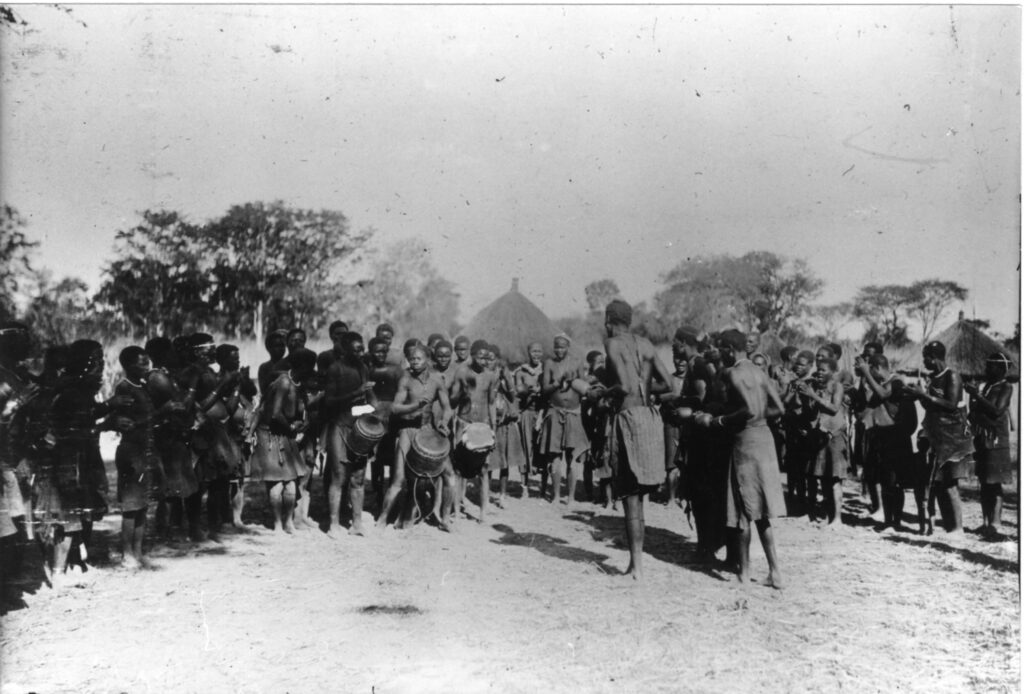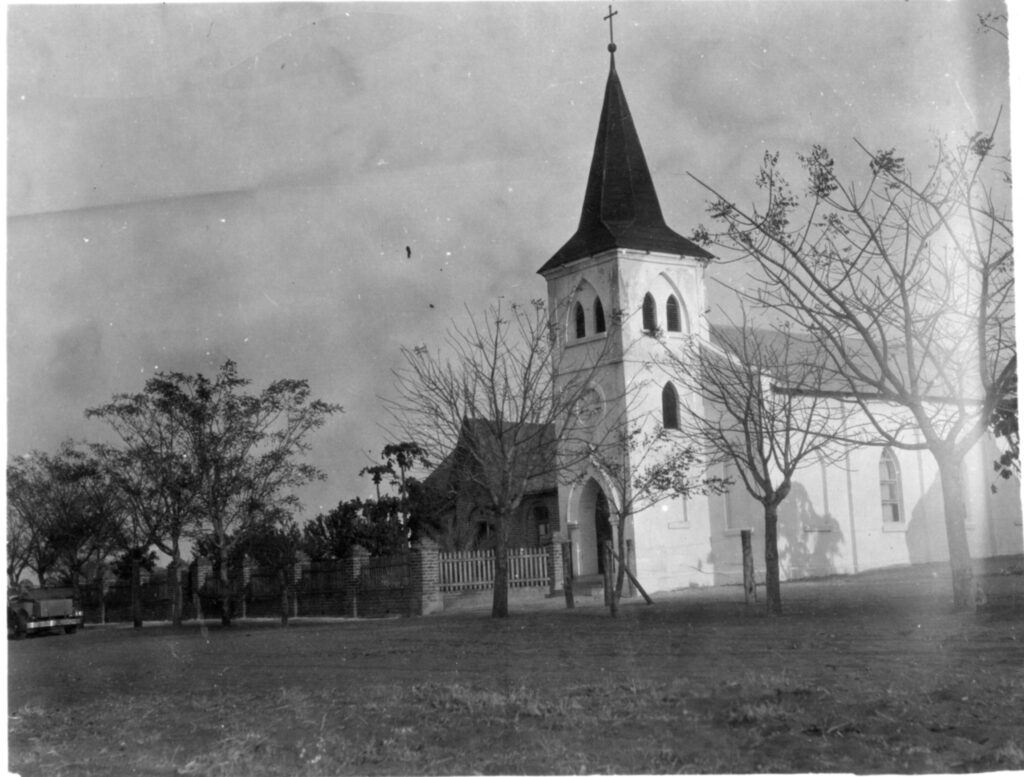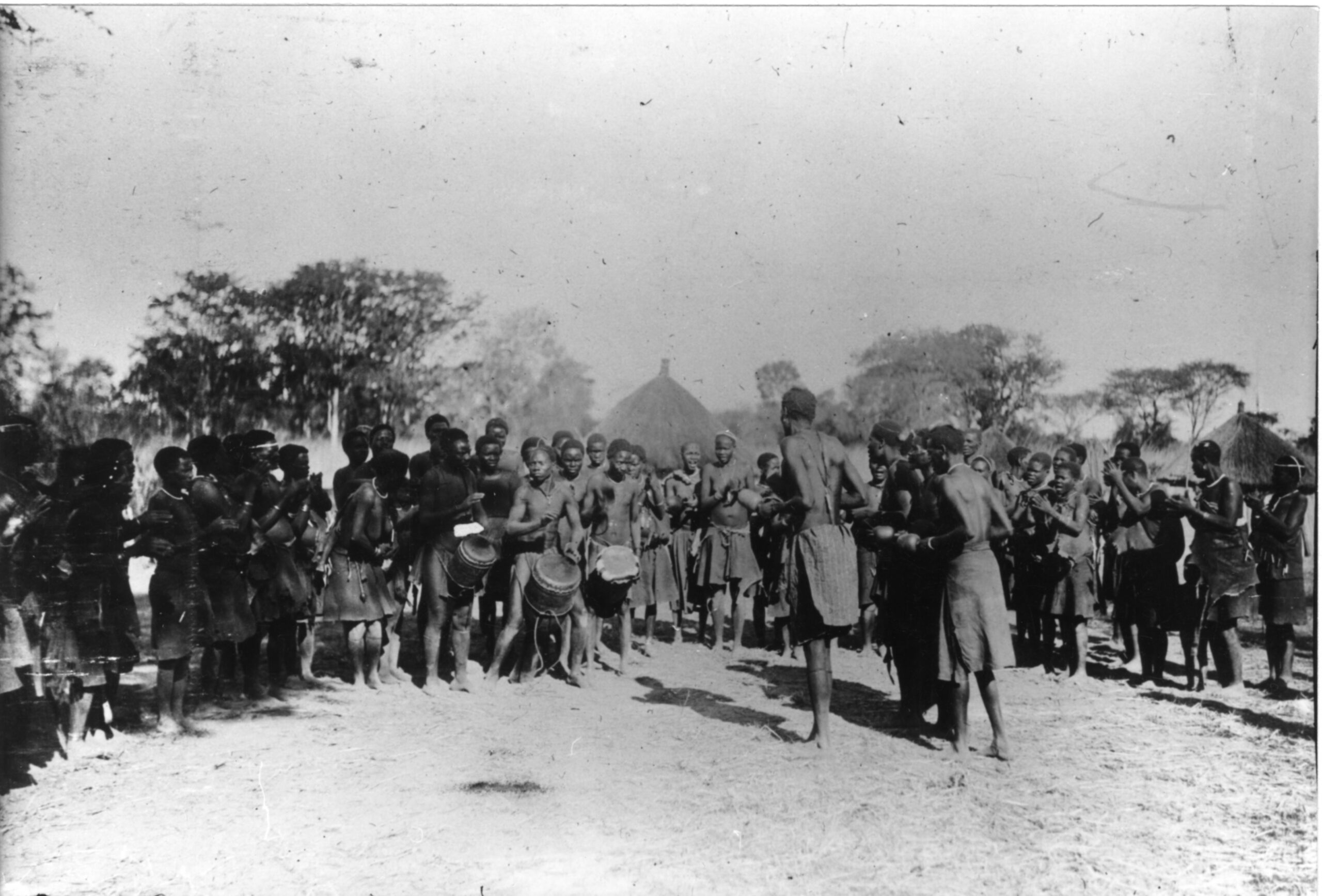By: Winnie Kanyimba (University of Basel)
Originally Published 30 September 2016 [LINK TO ORIGINAL]
The earliest missionary campaigns in the Caprivi had a low success rate, and it took until after World War I for large numbers of Caprivians to begin to convert to Christianity. In time, however, the majority of the inhabitants of the Caprivi became Christians and began to include aspects of Christianity in traditional ceremonies. What is of particular interest to me is the fact that many people of the Caprivi still held on to their pre-Christian beliefs and continued to practice their cultural rituals, passed on to them from previous generations. For example, it is believed by many that failure to inform others about the passing on of a family member will invite misfortune. This belief is completely uninfluenced by Christianity. Consequently, the fusion of the two opposing views has become the subject of contentious debate. Lumba Simasiku, a Windhoek resident from Katima Mulilo, remarked that, ‘as Caprivians we must choose whether to be Christian or cultural’.
Pre-Christian beliefs
Missionary reports revealed the importance of the role of traditional healers in the Caprivi. Traditional healers were consulted as they were believed to possess special powers of healing. They were also believed to have the ability to detect sorcerers, and it was their job to deflect illness caused by witchcraft. In unfortunate cases, accusations of witchcraft were exploited by anyone with the power to do so. As a result, many innocent people lost their lives or were punished unjustly.

Rituals also formed an important part of social life in the Caprivi, and were practised in different social situations that arose such as the birth of a child, marriage, and death. For instance, when a married man passed on, his corpse was wrapped in a blanket and removed through the back of the homestead. A corpse was never to be removed through the entrance of the homestead. Preservation methods such as mortuaries were unavailable, therefore he was buried the same day. Children were not allowed to watch while his corpse was carried away, or while he was buried.
Death affected the entire homestead, therefore each individual had to go through a cleansing ceremony. As it was believed that elders possessed valuable knowledge, they conducted the cleansing ceremony. They collected medicine from local plants, which were infused in water. The infusion was used to cleanse the entire homestead. The widow in particular, was placed in isolation in a hut, where all her hair was cut off and she was cleansed. During her cleansing, she was not allowed any interactions with the family. After the cleansing ceremony, the widow was either sent back to her family, or was married off to another man. It was believed that if the cleansing ceremony was not conducted, the deceased would return in the form of a spirit. In any social situation that arose, it was believed that failure to conduct the necessary rituals would result in bad luck or illness on an individual or the entire homestead. Although some practices were modified to suit emerging modern societies, they continue to persist in communities. Due to the influence of Christianity, cultural practices today are accompanied by Christian practices. Memorial services and funerals are officiated by a pastor and include scripture readings from the Bible.
Advent of missionaries
The earliest contact with missionaries in the Caprivi was in 1860, after David Livingstone of the London Mission Society requested permission to establish missions in the area. However, their expedition proved unsuccessful as many of the missionaries succumbed to malaria. The Paris Mission Society established missions in 1885 at Sesheke-Mwandi and in 1889 at Kazungula. Due to the fact that these missions were only established on the northern banks of the Zambezi River, the Paris Mission Society did not have a widespread influence over the Caprivi. The establishment of the Seventh-Day Adventist (SDA) mission in the Caprivi was linked to the desire of Chief Chikamatondo (chief of the Masubia) to have schools in the area. After he appealed to the British High Commission of Bechuanaland in 1920, two teachers from the Seventh-Day Adventist mission in Zambia were sent to the Caprivi. A European missionary of the SDA, Gilbert Willmore, arrived in 1921. He established mission schools in local areas, which attracted many students, and therefore many new converts. The SDA mission introduced a strict sense of morality, particularly with regard to the behaviour and traditional apparel of the Caprivi. Due to lack of financial support, mission schools were closed in 1943.

The South African Commissioner in Katima Mulilo, Major Trollope, made a request to the Roman Catholic Church in Zambia to start a mission in the Caprivi. The approval of the request resulted in the establishment of a Roman Catholic mission and schools in Katima Mulilo in 1944. The Dutch Reformed Church of South Africa established missions from 1958, resulting in the emergence of various local churches.
Conversion to Christianity
When the mission schools of the SDA were closed, local teachers who were exposed to its teachings continued to preach the Gospel in their respective areas. Joel Mwilima worked in the districts of Kanono and Linyanti, Dickson Mutabelezi in Sangwali, Davison Mubonenwa in Katima Mulilo, and Mixon Fwambi in Luhofu. Mwilima was the first to be ordained as a pastor in 1961, as the other teachers died before they could be ordained. Libonina Lee Mubonenwa (son of Davison Mubonenwa) was ordained as a pastor in 1969, and worked in the Kanono area. Through the churches they established, these men contributed to the high success of the SDA mission in the Caprivi, as many followers became strong believers under their guidance. Only a small number of people attended churches established by the Roman Catholic and the Dutch Reformed Church.
The SDA church views Saturday as the Sabbath, therefore it interesting to note that the word for Saturday in Silozi, the lingua franca of the Caprivi and other local languages is Sabatha, most probably derived from the word Sabbath.
Looking Forward
Through attendance of mission schools, the vast majority of the people of the Caprivi converted to Christianity, and therefore adopted many of its ideals as a way of life. However, it has proven an impossible task to divorce Caprivians from their own cultural beliefs and ideals. Many people continue to consult traditional healers because it is believed that some illnesses are inflicted by sorcerers practising witchcraft, and therefore cannot be diagnosed by a medical doctor. For some, church attendance and prayer substituted the services of traditional healers as methods to fight against witchcraft. This points to the fact that both the cultural beliefs and those of Christianity provide insight of the way Caprivians shaped their world view. The two should be viewed on equal terms, with equal ability to contribute valuable ideas.
